The Legacy of the Universe: Moon Myths and Folklore
16th Jun 2023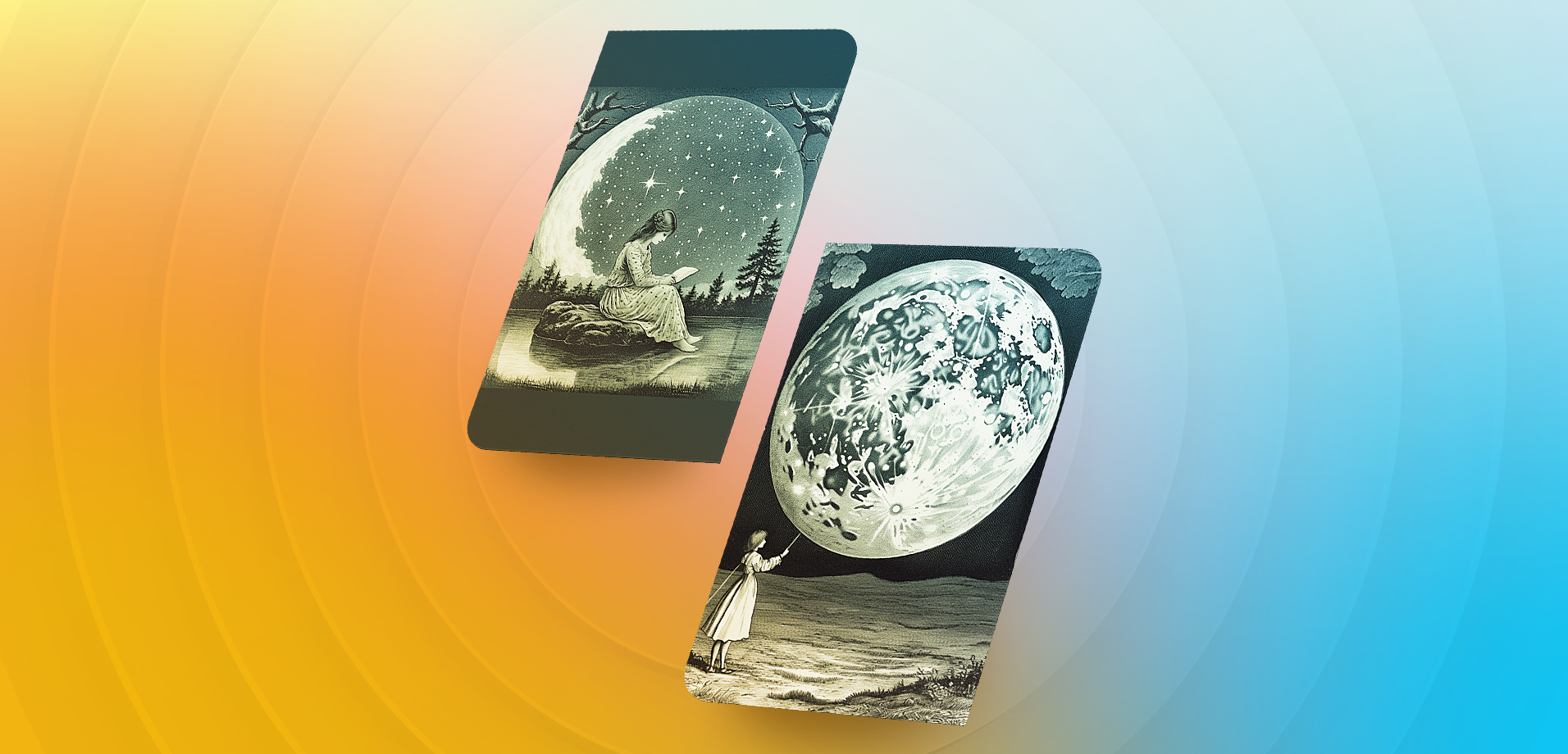
The Moon was probably the first object in the night sky that caught the ancients’ attention. They could not know what it was, but they were able to understand that it affects their lives. This is how the first Moon myths were born. And it happened about 30-40 thousand years ago.
Over time, the number of legends and beliefs grew. Moreover, each culture had its own myths. Stories were often borrowed from foreigners and passed on to new generations. Science has dispelled them, but some folktales about the Moon are still alive. Let’s discuss some of them.
Ancient Myths About the Moon
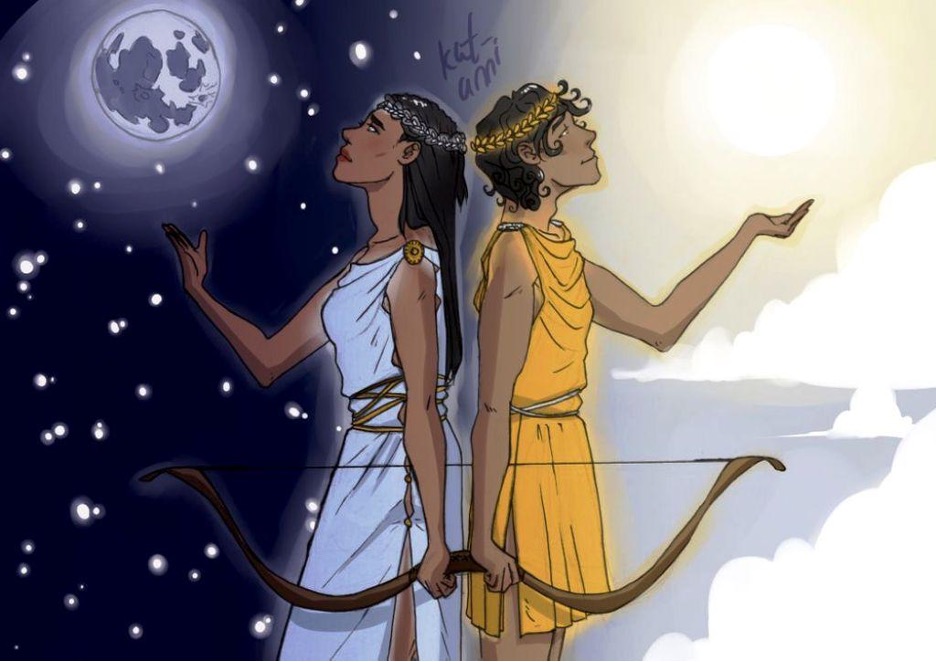
The ancients needed to explain where the Moon came from, so the first myths were associated with its origin. They saw how it changes size, shape and even colour and projected these changes onto their life events. As a result, the ancients perceived the Moon as a deity that determines fate and created beautiful stories about it.
China
Chinese Moon mythology tells of a beautiful fairy named Chang’e who controlled water, healed and stood up for love and marriage. There are several myths about Chang’e, united by a common plot — Chang’e drinks the forbidden elixir of immortality, intended for her husband, the archer Houyi, and is taken to the moon, where, from then on, she is doomed to live in almost complete solitude, accompanied only by a jade bunny.
Every year on the 15th day of the 8th month of the lunar calendar, modern China celebrates the traditional Mid-Autumn Festival dedicated to Chang’e and unmanned probes that explore the Moon as part of the Chinese Lunar Programme are also named after her.
India
In Indian myths about the Moon, it was associated with the god Chandra (Sanskrit for sparkling), who was considered the source of all the living beings’ life force. Since the life-giving coolness emanates from the Moon, which has a beneficial effect on crops, Chandra personifies the life of all living things.
Egypt
In Egyptian mythology, the Moon is the goddess Hathor. According to the myth, she appeared after the king killed his mother. Her eyeball fell to Earth and turned into the Moon.
America
According to the Native American myths about the Moon, the moon was the daughter of the Sun and the Earth and was born at the same time as the Day. Later, though, her mother, the Earth, threw her into the sky to help humanity at night.
Japan
Once, the sun goddess Amaterasu became angry with her brother, the storm god Susanoo, and left, plunging the world into pitch darkness. Agriculture and animal husbandry were on the verge of destruction.
The gods decided to help the people. They placed the Sacred Mirror in front of the entrance to the grotto where Amaterasu hid. The goddess saw her reflection in this mirror and wanted to possess it. The gods agreed, but in return, they demanded a promise that she would contribute to the prosperity of life on Earth. Amaterasu agreed and placed a mirror over the sky gods, creating the moon.
Greece
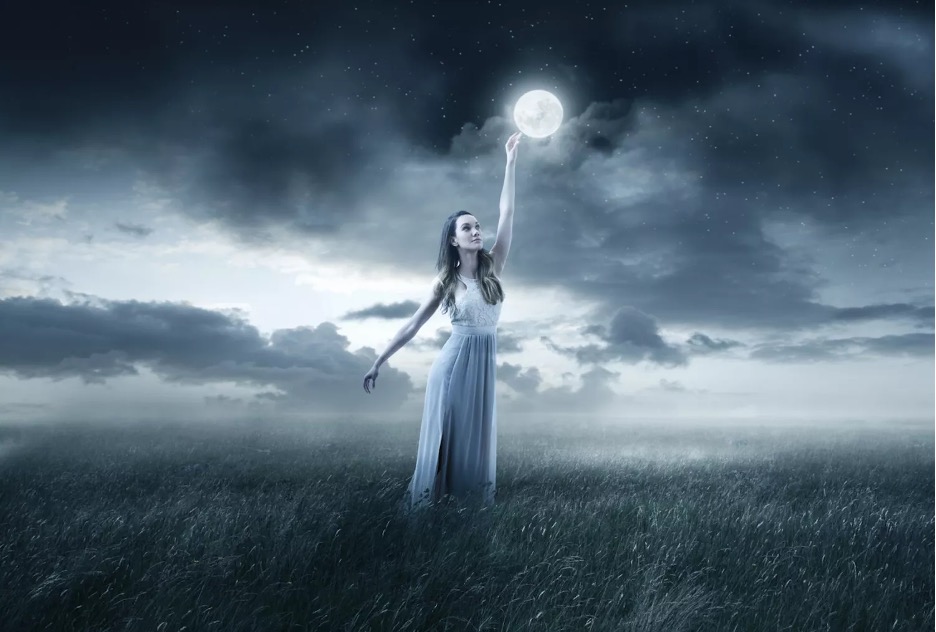
In Ancient Greek Moon legends, the Moon was the daughter of the god Hyperion and the goddess Theia and was called Selene. She was a divine maiden with a luminous face who rode through the sky every night in her lunar chariot drawn by bulls with strong horns.
Rome
In Roman mythology, there was a goddess named Luna who was associated with femininity, magic, and the cycles of the life force. The Romans believed that it reflected a tireless concern for the Earth and people, while the Sun was considered the main god, personifying masculinity.
Oceania
For centuries, aboriginal people believed that two sisters lived on the same island, both wonderful hunters and fishers. One day, they pulled a magical fish out of the water, a huge white flounder, and decided to eat it immediately. They left it in the grass to collect roots and firewood, but while they were walking, the magic fish climbed up a tree. And when the fish saw the sisters again, she began to jump higher and higher along the branches until she climbed into the sky. So the Moon is just a very big flounder.
Full Moon myths and legends from around the world
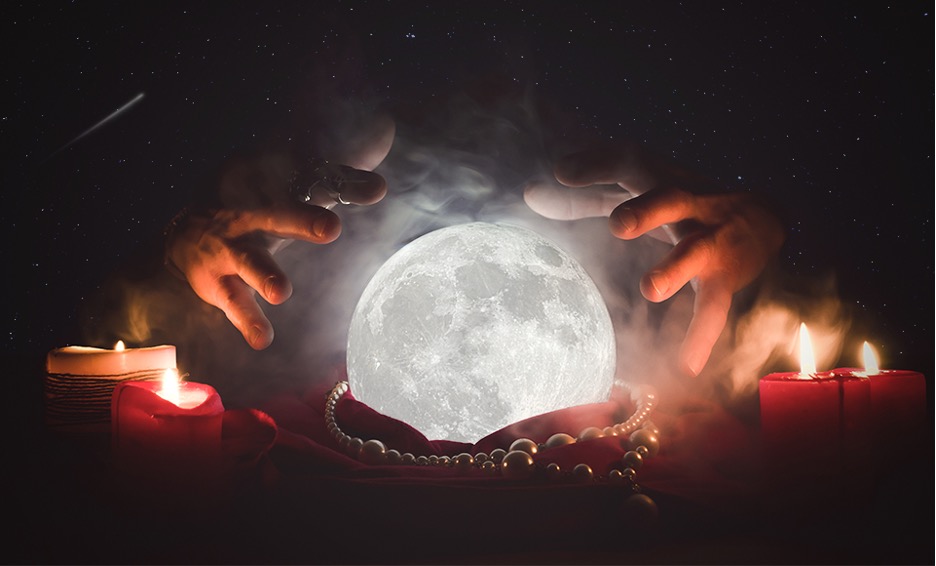
The plenilune is the time of energy at its maximum, which causes anxiety. Emotions are aggravated, anxiety levels rise, and extremely vivid dreams or unpleasant nightmares may occur at night. Our fears and doubts are intensifying, which gives rise to many beliefs and superstitions.
Full Moon myths superstitions
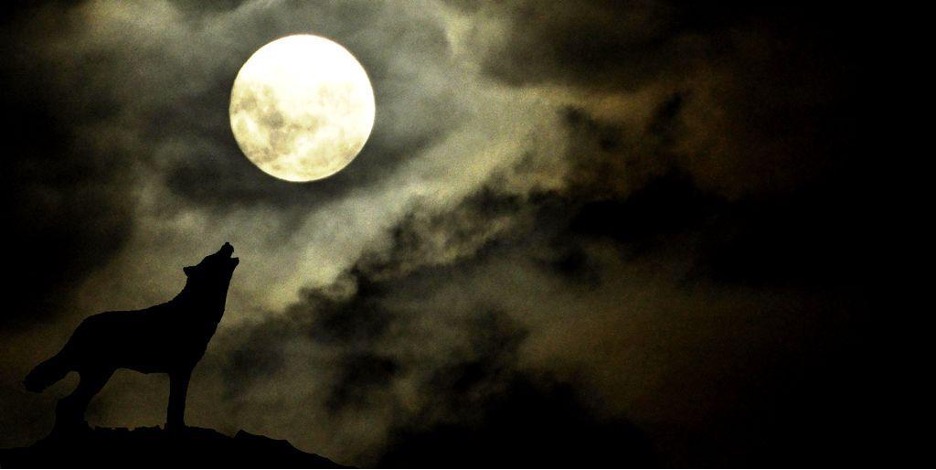
One of the most popular myths about the full Moon is that if you sleep outside during such a night on a Wednesday or Friday in summer, you can turn into a wolf. Since ancient times, people have noticed that during the Full Moon in all its glory, dogs bark and howl more, and are more aggressive. Research has confirmed that on these days, animals bite people twice as often as usual.
Plenilune and money welfare
There are many beliefs associated with the plenilune and money:
- For the money to come, put a coin in your pocket on the harvest moon.
- A wallet with money placed on the windowsill on the night of the Wolf Moon will surely attract wealth.
- So that money does not escape you, sew up all the holes in your pockets on the Full Moon.
- On the night of the full phase of the Moon, you need to fill a bowl with water, put money in it, and place the bowl on the windowsill. In the morning, you should wash your feet with this water, speaking the following words out loud: “I pour myself with money water, I am filled with wealth. Feet will lead to where the cup is full.”
Full moon and fate
Since ancient times, people have been looking for ways to improve their health, financial or family situation, and generally, change their fate for the better. Here are some folk beliefs related to Luna mythology:
- Wearing red underwear on a night, when the Moon is looking like a complete circle, is a sign of success in all your endeavours and undertakings.
- To get rid of enemies or diseases, one should write their names and titles on paper and burn the paper on candle fire. The ashes must be then put into running water (river, stream, under the stream of water in the washbasin).
- Seeing a shooting star during this lunar phase should bring great personal happiness.
- If you put a mirror under your pillow on the night of the Full Moon, you can find out your future. If a woman dreams about a man, she should have a quick encounter; if she dreams of a woman, she will, for now, remain lonely.
According to Moon folklore, children born on a plenilune will be physically and mentally weak. A difficult fate and a difficult life await them.
What you shouldn’t do on a night when the Moon is at its fullest
Our ancestors advised people to draw the curtains tightly at night and avoid doing the following on a full moon:
- Lending money, so as to avoid quarrels.
- Start new commercial projects because they will not bring profit.
- Cut nails; otherwise, luck will be gone.
- Start complex courses of treatment, go through surgeries, and do intensive physical exercises.
- Show your ambitions or provoke conflicts.
- Make responsible decisions.
- Visit crowded places to avoid meeting mentally unstable people whose conditions can worsen during this lunar phase.
Of course, you may not believe in these signs, but it is worth remembering that many of them have been formed over the centuries and are based on real observations.
Blood moon folklore
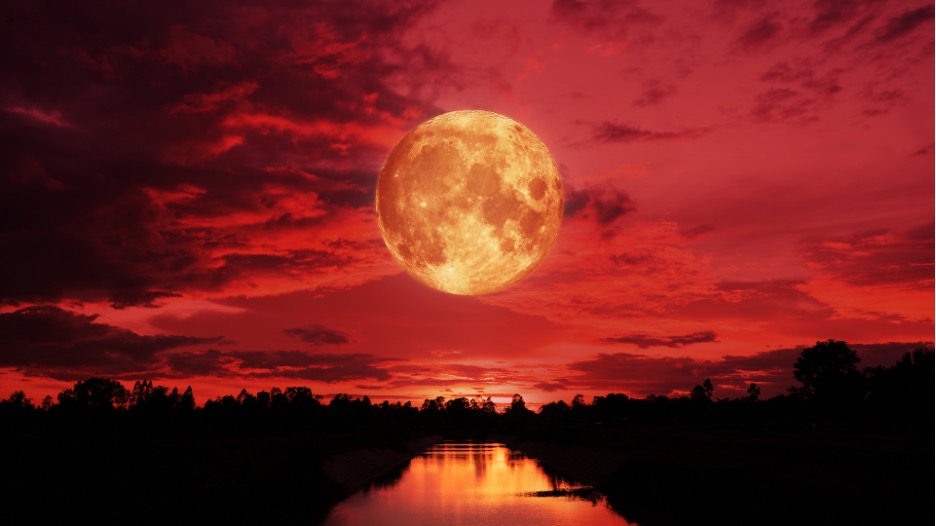
During periods of a total lunar eclipse, the luminary falls into the shadow of the Earth and darkens almost instantly. But some of the sunlight still reaches the Moon, refracting through the nitrogen-rich atmosphere of our planet. The blue hues dissipate, leaving only orange and red, which is why this phenomenon is called the Blood Moon. Well, the ancients could only explain this by mystical properties.
What is the myth of the blood moon?
In ancient civilizations, the “Blood Moon” was a harbinger of evil. According to Native American moon myths, a jaguar has attacked the Moon and is devouring it. They believed that the jaguar could also pay attention to them, so they began to shout and shake their spears, made the dogs bark and howl, hoping to scare away the big cat.
In ancient Mesopotamia, a lunar eclipse was considered a threat to the king. They were able to quite accurately predict such phenomena, so for this period, they appointed someone they would not miss as king.
In the Hindu Blood Moon folklore, the lunar eclipse is explained by the fact that once, the demon Rahu drank the elixir of immortality. The twin deities, the Sun and Moon, beheaded him, but his head remained alive. In an attempt to get revenge, Rahu’s head chases after its executioners, hoping to devour them. And when this happens, an eclipse occurs, but after a while, the Moon and the Sun appear from the severed neck of Rahu.
Since then, the Hindus believe that the lunar eclipse is a sign that brings misfortune. Food and water are covered, and cleansing rituals are performed. Pregnant women stop eating and doing housework to protect their unborn children as much as possible.
But some Moon myths and facts say that a lunar eclipse was not always a harbinger of tragedy. The Hupa and Luiseño Native American tribes believe that the Moon is simply injured or sick. They begin to sing healing songs, addressing the darkened luminary.
The people of the Batammariba tribe in Togo and Benin see the lunar eclipse as a conflict between the Moon and the Sun, which they must help resolve by setting an example. So, on this day, it is customary to forget old quarrels. And this tradition continues to this day.
Do blood moons affect people?
This phenomenon has practically no effect on the state of physical health. However, colour change can affect the individual’s mental state. As a rule, it affects the most impressionable, hypersensitive, and suspicious people.
Blue Moon myths and legends
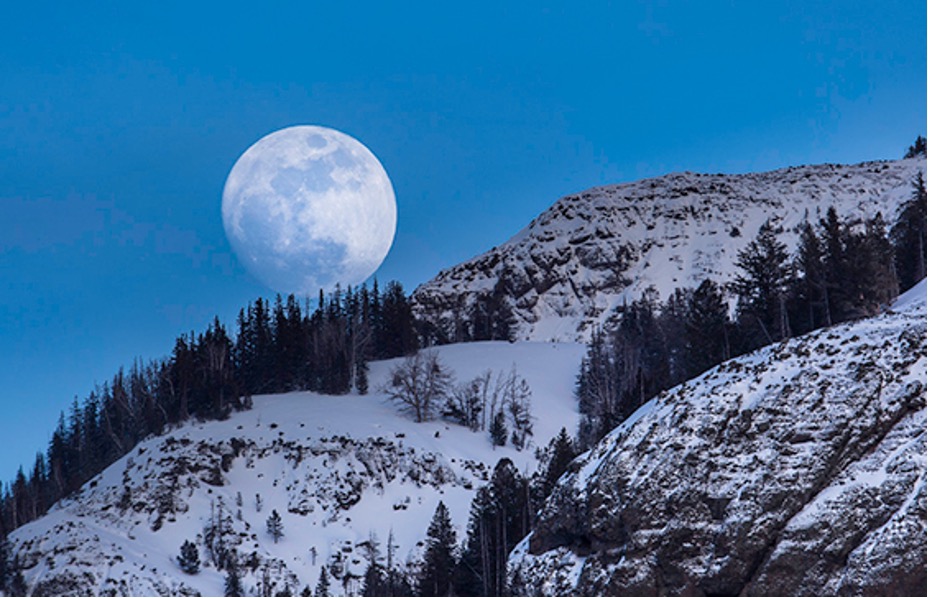
A Blue Moon is a rather uncommon occurrence that happens once every 2.5 years and is defined by NASA as the third plenilune in an astronomical season consisting of four full moons. The Blue Moon always falls on the last day of the month, the 30th or 31st, meaning that we will definitely not see it in February.
Due to the rarity of the phenomenon, some cultures believe that such a Moon has magical powers. For example, in Native American folklore, this is a time when you can communicate with ancestral spirits and have your wishes granted. For some nations, this is a warning of an impending catastrophe, while others saw it as a sign of good luck. Often the phenomenon is associated with love and romance. In the UK, the phrase “Once in a Blue Moon” is still used today to describe something rare and unusual.
New Moon folklore
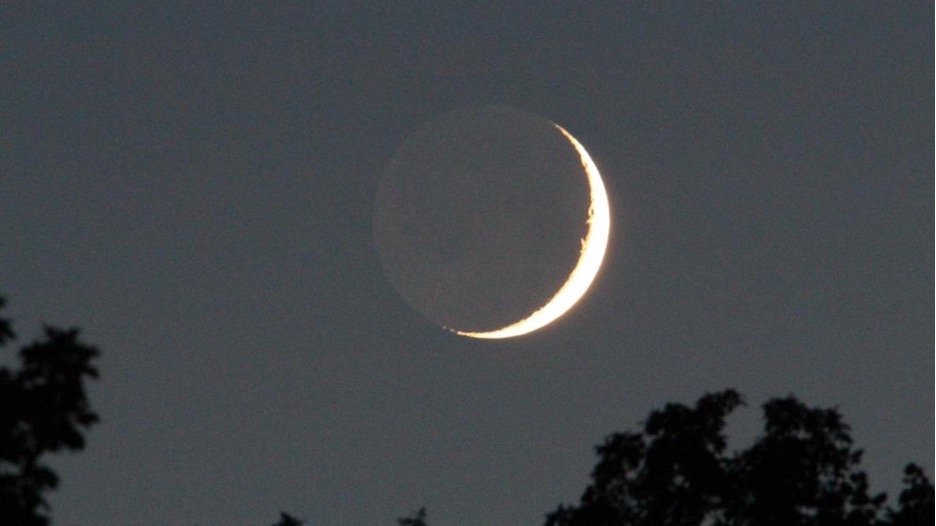
At the new phase of the Moon, our natural satellite passes between the Sun and the Earth. The dark side of the Moon, not illuminated by the Sun, is facing the Earth, so it is not visible. Only two days after the new moon, a thin crescent of the moon appears in the evening sky, in the West, shortly after sunset. The people called this the birth of the moon, associating a huge number of superstitions and new moon myths with this phenomenon.
For example, this period was considered the best time to start any business. During the new phase of the moon, it was recommended to sow bread, start harvesting, have weddings, or ask for a woman’s hand in marriage. If the crescent-moon coincided with the first day of the week, it was believed that the success of each business increased many times over. Any disease that began on a New Moon was supposed to pass quickly. If you swim on a Bow Moon, you can charge yourself with vigour and energy until the waning moon. Childbirth during the new phase of the Moon meant that the child would grow up healthy and happy.
Conclusions
For centuries, Moon myths and legends have tried to explain how the Moon appeared and how it affects us. And although scientific theories reveal these secrets, people are still inclined to believe in mysticism and supernatural phenomena. But perhaps moon folklore is also a way to preserve our historical heritage?
![Beauty of the Pink Moon And Lyrid Meteor Shower in This Week’s Best Astrophotos [19-26 April] Beauty of the Pink Moon And Lyrid Meteor Shower in This Week’s Best Astrophotos [19-26 April]](https://orbitaltoday.com/wp-content/uploads/2024/04/Pink-Moon-is-on-its-way-above-the-mountains-1-300x300.jpg)





Thank you for your comment! It will be visible on the site after moderation.